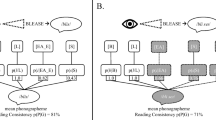Abstract
While there are many parallels between computing activities in musicology and those in other humanities disciplines, the particular nature of musical material and the ways in which this must be accommodated set many activities apart from those in text-based disciplines. As in other disciplines, early applications were beset by hardware constraints, which placed a premium on expertise and promoted design-intensive projects. Massive musical encoding and bibliographical projects were initiated. Diversification of hardware platforms and languages in the Seventies led to task-specific undertakings, including preliminary work on many of today's programs for music printing and analysis. The rise of personal computers and associated general-purpose software in the Eighties has enabled many scholars to pursue projects individually, particularly with the assistance of database, word processing, and notation software. Current issues facing the field include the need for standards for data interchange, the creation of banks of reusable data, the establishment of qualitative standards for encoded data, and the encouragement of realistic appraisals of what computers can do.
The musicologist Eleanor Selfridge-Field, who is the author of three books on Italian music and numerous articles, editions, and reviews, has worked at CCARH since its founding in 1984. Her most recent book, The Music of Benedetto and Alessandro Marcello (Oxford: Clarendon Press, 1990), which contains 1300 musical examples, was produced from camera-ready copy supplied by CCARH.
Drs. Hewlett and Selfridge-Field jointly edit the series Computing in Musicology, which is published by CCARH, and co-chair the International Musicological Society's Study Group on Musical Data and Computer Applications.
Similar content being viewed by others
Bibliography
Essential source
Davis, Deta. Computer Applications in Music: A Bibliography. The Computer Music and Digital Audio Series, 4. Madison, WI: A-R Editions, 1988. This source contains references to all of the early work cited in the present article and largely subsumes earlier bibliographies.
Supplementary sources
Brinkman, Alexander R. Pascal Programming for Music Research. Chicago: The University of Chicago Press, 1990.
LaRue, Jan. A Catalogue of Eighteenth-Century Symphonies. I. Thematic Identifier. Bloomington: Indiana University Press, 1988.
Lerdahl, Fred and Ray Jackendoff. A Generative Theory of Tonal Music. Cambridge: MIT Press, 1983.
Lester, Joel. The Rhythms of Tonal Music. Carbondale: Southern Illinois University Press, 1986.
Lester, Joel. Between Modes and Keys: German Music Theory from 1592 to 1802. Stuyvesant, NY: Pendragon Press, 1989.
Lincoln, Harry. The Madrigal and Related Repertories: Indexes to Printed Collections, 1500–1600. New Haven: Yale University Press, 1988.
Long, Michael. “Symbol and Ritual in Josquin's Missa di Dadi.” Journal of the American Musicological Society, 42 (1989), 1, 1–22.
McLean, Bruce. “The Representation of Musical Scores as Data for Applications in Musical Computing.” Doctoral dissertation, State University of New York at Binghamton, 1988.
Page, Stephen D. “Computer Tools for Music Information Retrieval.” Doctoral dissertation, Oxford University, 1988.
Powers, Harold S. “Language Models and Computer Applications.” Ethnomusicology, 24 (1980), 1–60.
Powers, Harold S. “Tonal Types and Modal Categories in Renaissance Polyphony,” Journal of the American Musicological Society, 34 (1981), 428–70.
Ruwet, Nicholas. Langage, musique, poésie. Paris: Seuil, 1972.
Schaffrath, Helmut, ed. MAPPET:: Music Analysis Package. Tr. Peter Cooke. Essen University, 1990.
Trowbridge, Lynn. “Style Change in the Fifteenth-Century Chanson.” Journal of Musicology, 4 (1985–6), 2, 146–70.
Recent periodicals
Computers in Music Research, ed. John William Schaffer. Annual publication of articles emphasizing activities undertaken by members of the Society for Music Theory. Initiated in 1989. May be ordered from the School of Music, 455 N. Park St., University of Wisconsin, Madison, WI 53706, USA; jwsaesss@vms.macc.wisc.edu.
Computing in Musicology, ed. Walter B. Hewlett and Eleanor Selfridge-Field. Annual directory of projects and activities based on material provided by scholars and software developers. Dozens of projects and topics related to the above discussion are covered. Seven volumes published since 1985. May be ordered from the Center for Computer Assisted Research in the Humanities, 525 Middlefield Road, Suite 120, Menlo Park, CA 94025, USA.
Musicus:: Computer Applications IN Music Education, ed. Anthony Pople. Semi-annual publication containing short articles and user reports on software. Initiated in 1989 under the British Computers in Teaching Initiative and distributed free to music faculties in the United Kingdom. Overseas subscriptions available. Enquiries may be address to the CTI Center for Music, Department of Music, Lancaster University, Lancaster LAI 4YW, England; CTI/music@lancaster.ac.uk.
Musikometrika, ed. Moisei Boroda. Annual publication of articles focusing on stylometrics produced within the series Quantitative Linguistics. Contains many articles in English (occasionally in French and German) translated from earlier publications in the U.S.S.R. as well as new writings from the West. Initiated in 1988. Enquiries should be directed to Studienverlag Brockmeyer, Querenburger Höhe 281, 4630 Bochum, Germany.
Author information
Authors and Affiliations
Additional information
Walter B. Hewlett, the founder and director of the Center for Computer Assisted Research in the Humanities, holds degrees in physics, engineering science, and operations research in addition to a doctorate in music. He is the designer of the input, storage, and retrieval system for musical information that is in active use at CCARH for the encoding of the complete works of J. S. Bach, Handel, Mozart and other composers.
Rights and permissions
About this article
Cite this article
Hewlett, W.B., Selfridge-Field, E. Computing in musicology, 1966–91. Comput Hum 25, 381–392 (1991). https://doi.org/10.1007/BF00141188
Issue Date:
DOI: https://doi.org/10.1007/BF00141188
Key Words
- Bach Database
- musical databases
- DARMS (Digital Alternate Representation of Musical Scores)
- ESAC (Essen Associative Code)
- IML-MIR (Intermediary Musical Language-Music Information Retrieved)
- IRCAM
- language models (for musical analysis)
- MIDI (Musical Instrument Digital Interface)
- MIPS (Musical Information Processing Standards)
- musical data
- musical information
- RISM
- SCORE
- musical analysis
- music printing




